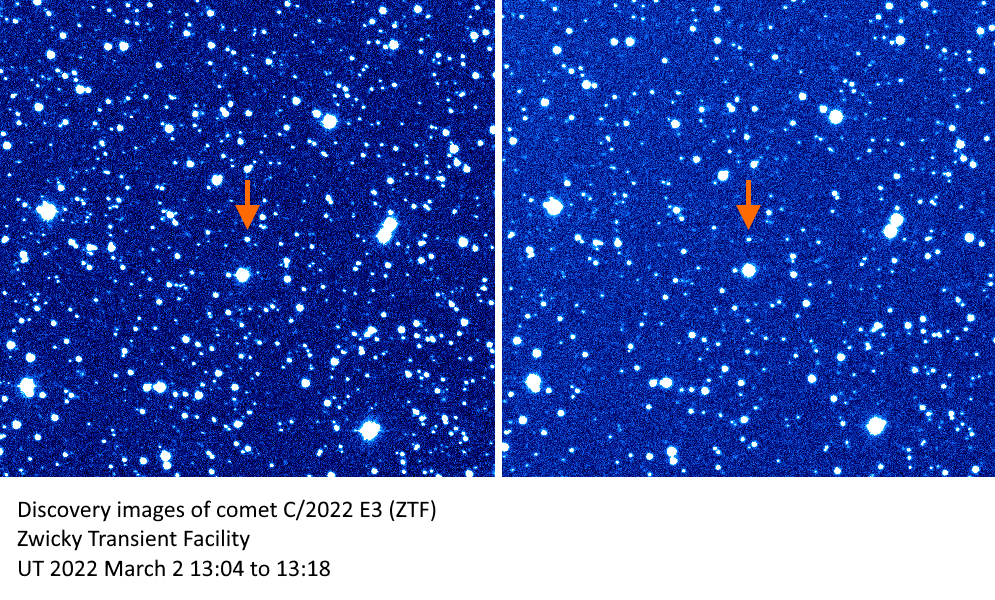Caltech-Discovered Comet Makes an Earth Flyby in January
by JuliA Ehlert
Caltech researchers discovered a comet with the Zwicky Transient Facility (ZTF) at Caltech’s Palomar Observatory last year. Now, it’s coming to say hello. The C/2022 E3 (ZTF) comet will pass near enough to Earth this month that stargazers might be able to spot its glowing green halo and plasma-dust tail through a telescope or binoculars.
Image: Dan Bartlett
In March 2022, staff scientist Frank Masci and former postdoctoral scholar Bryce Bolin discovered the comet. Using ZTF’s robotic camera and software developed by Masci to scan the night sky, the system detected a moving object.
“This particular object was spotted because of its motion in a sequence of images taken by ZTF,” says Tom Prince, Ira S. Bowen Professor of Physics, Emeritus; Allen V. C. Davis and Lenabelle Davis Leadership Chair, Keck Institute for Space Studies; and director, W. M. Keck Institute for Space Studies. “At the time it was discovered, it was not known to be a comet. That came later after follow-up observations by many telescopes worldwide.”
For viewers in the Northern Hemisphere, the comet may be visible in good conditions away from city lights during early mornings in January. The best time to catch a glimpse will be January 21 through the following week, when the new moon will reduce moonlight interference.
On January 12 at 8 p.m. PT, the Virtual Telescope Project, which provides online access to remotely operated telescopes, will host a livestream for viewers to watch the comet’s perihelion, or closest approach to the sun. The comet will come closest to Earth on February 2, at a mere 26 million miles away, but observers may find it more difficult to spot then due to the moon’s brightness. After that, it will disappear back into the dark reaches of space.
Image: ZTF / Caltech


